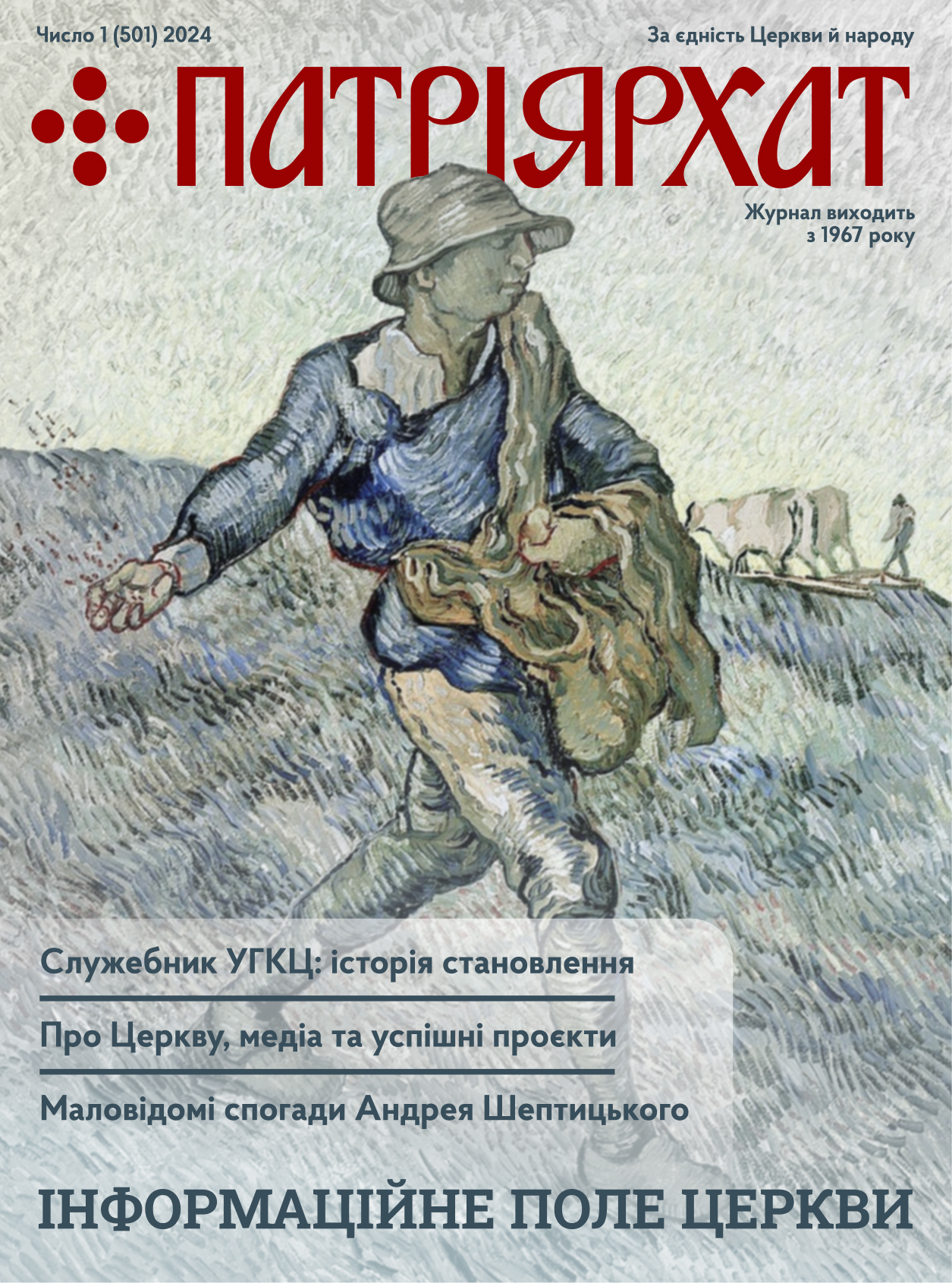St. Sophia, meaning Holy Wisdom, the Ukrainian Catholic Cathedral in Rome, is one of the many landmark achievements of our Patriarch Joseph I (Slipyj). Soon after his release in 1963 from incarceration in concentration camps and prisons by the atheistic Russian invader and occupier of Ukraine, Patriarch Joseph began plans for the construction of this Church. His faith in God, as well as his loyalty to the unity of his Ukrainian particular Church with the See of St. Peter, had been sealed by his 25 years of martyrdom, inflicted on him for the sole reason of his refusal to renounce that faith or that unity.
A striking fact about St. Sophia is that its fresh beauty is not only admired by visitors, Ukrainians and others from different countries, but by native Romans, some of whom choose it for their weddings, baptisms, and other religious occasions. Although the city of Rome has more than 1,000 churches, many of these churches are overly large, uncared for, and poorly attended, creating an atmosphere of museums rather than instruments of the living Church of Christ. This could be either the cause or the effect of the growing atheistic Communist Party in Italy, considered the largest Cummunist Party in a non-Cummunist coutry at the present time.
Traveling by bus #146 on Via Boccea St. Sophia comes into full view with its lovely and fresh white stucco walls and five rounded gold domes. Standing in front of the Church are the three identical angels, like those who appeared to Abraham, holding a single basin from which water flows, signifying the living waters flowing from the Holy Trinity.
During 1,000 years of Christianity in Ukraine, beginning with St. Olha, Queen of Ukraine in the 10th century, this is the second Ukrainian Catholic Church to be consecrated in Rome, filling a void created by the take-over of Ukrainian Churches by the atheistic Communist government of Poland and Russia occupying Ukraine today by force and terror. The other Ukrainian Catholic Church in Rome is Saints Sergius and Bacchus on the Piazza Madonna dei Nonti, one block from the Colosseum which faces the very large avenue, Via Cavour. The crossroad is Via dei Serpenti.
The consecration services of the Cathedral of St. Sophia began Saturday, September 27, 1969, when Patriarch Joseph returned from a two-hour conference with Pope Paul VI, at which time he was given the Papal blessing for the forthcoming Ukrainian Catholic Synod commencing on the following Monday, September 29th, and continuing through October 4th. Two important documents were the result of this Synod: a Pastoral Letter to all the faithful of the Ukrainian Catholic Particular Church in the World and the framework of a Constitution embodying the principles of the Kyiv-Halych Patriarchate, with our Ukrainian Confessor of the Faith, the only living Martyr-Patriarch in the Christian Church, as its head.
The Saturday (September 27) consecration services consisted of Divine Liturgy out-of-doors celebrated by Patriarch Joseph for the Ukrainian faithful who had come from different parts of the world for the occasion. The doors and walls were blessed with holy water and oils, followed by the traditional washing of the marble altar, an age-old consecration ritual. The responses were sung by the Ukrainian choirs from United States, Canada, Holland, and Germany. Patriarch Joseph made the announcement of the upcoming Synod and the Papal blessing on it, St. Sophia Cathedral resounded with thunderous and prolonged applause from all the Ukrainian faithful present, some 5,000 strong.
During the consecration, Patriarch Joseph, who is considered by Church scholars to be an authority on the complex subject of the Holy Trinity, spoke on the Holy Wisdom, noting that in paying homage to the Holy Wisdom man prays to God for prudence and enlightment. He noted that the pagan people, the Babylonians, Egyptians, Greeks and Romans considered wisdom to be the highest ideal of human endeavors. He mentioned King Solomon and his books of wisdom; and Emperor Justinian who built the Hagia Sophia in Constantinopole, unsurpassed in art and architecture.
Patriarch Joseph continued by pointing out that from its early history Ukraine has paid special reverence to the Holy Wisdom. Ukraine’s Grand Prince Volodymyr the Great and his son, Yaroslav the Wise, built the Cathedral of St. Sophia in Kyiv, Ukraine’s capital. Grand Prince Yaroslav added a huge library and school in Kyiv which produced the collection of laws given to the Ukrainian people some two centuries before England produced its Magna Charta. During this Princely era, Ukraine’s Metropolitan Marion of Kyiv was regarded as one of the most learned and intelligent men of the 11th century, and the Ukrainian Chronicles of the times are still considered the best in Europe. Marion was followed by the great Ukrainian scholar, Metropolitan Clement Smoliatych. Ukraine was the center of scholarship in the 12th and 13th centuries until the devasting invasion of the Mongols. Scholarship then shifted to the western section of Ukraine, Galicia and Volhynia, under King Danylo and his brother, Vasylko. This historical phenomenon parallels the present-day invasion of Ukraine by the foreign atheistic Communist invaders which caused Ukrainian scholarship to shift to different parts of the world.
The response of Pope Paul to Patriarch Joseph, on this occasion, was confusing and vague but can be explained in the light of the following background material.
Like a phoenix rising from its ashes, Ukrainian scholarship returned in the 16th and 17th centuries in both western and eastern Ukraine with Church Brotherhood schools in Lviv, Ostrih, Vilnius, Volodymyr Volynsky, and Kyiv. Special credit for this achievement goes to Prince Constantine Ostrozky, Metropolitan Petro Mohyla who transformed the Kyiv school into a university, an institution mentioned in the memoirs of many travelers during that period. Small wonder that the Muscovites, the Finno-Ugrian-Mongol people who emerged about the 13th century and are the present-day Russians, tried to mimic the Ukrainian culture and scholarship. With only the terrors of an Ivan the Terrible, Peter I, and Catherine II to boast of, the leaders changed the name «Muscovia» for their duchy to «Rossiya» in an effort to graft themselves onto Ukraine whose ancient name was «Rus’-Ukraine.»
It was during this gigantic surge towards the resurrection of Ukraine in the 17th century that Metropolitan Rutsky requested the Vatican to recognize the rights of the Ukrainian Catholic Patriarchate of Kyiv-Halych. It has been not merely this recognition that has not been forthcoming from the Vatican since that time, but the Vatican bureaucrats have nibbled away all other rights possessed by the Ukrainian Catholic Church and lawful heirs when she signed the Union of Brest in 1596 with the Vatican. Some 400 years later, Ukrainians are still fighting for these rights which would save Ukraine and her people from the continued cruel terror and devastation by Russia as it would have spared her all the suffering and devastation by Poland as well as Russia for the past two centuries. Furthermore, it would have strengthened the Ukrainian Nation as a bastion of Christianity between East and West as she had been for some 800 years against the Mongol invasions. But the Vatican persists in its drive toward centralization and totalitarian authority, offering a false security ander the guise of the uniformity of Romanization.
To be cont. in next edition

